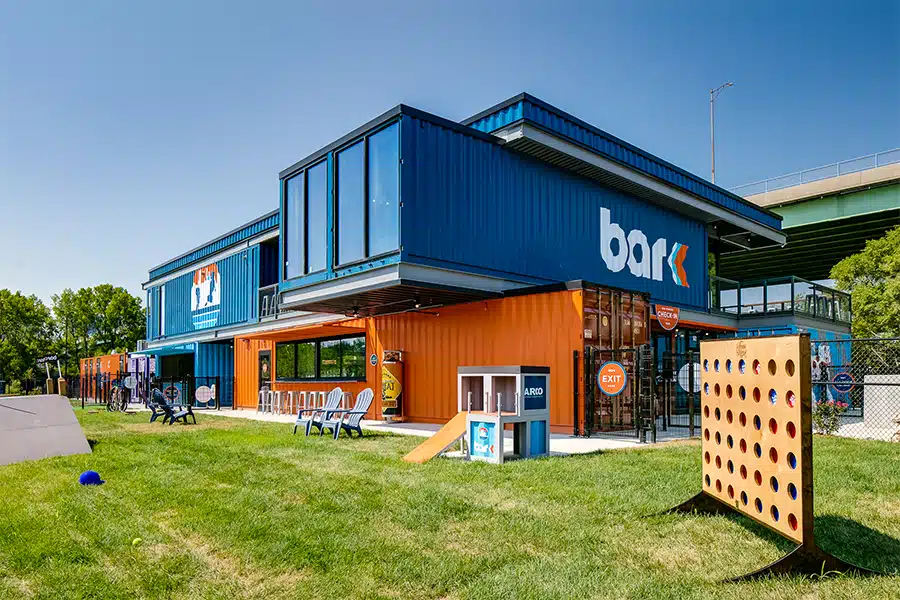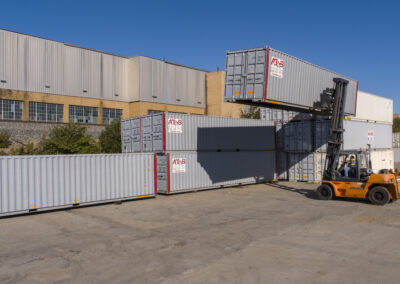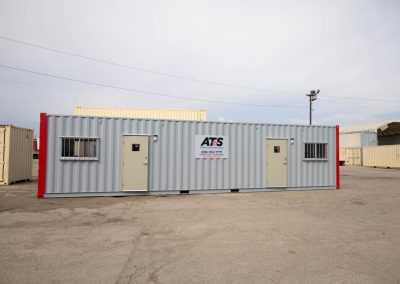Shipping containers, originally conceived as practical solutions for storage and transportation, have transcended their origins to become emblems of innovation and sustainability. The adaptability of shipping containers has led to a surge in their popularity in recent years, making them a top choice for project managers, architects, and designers looking to push the boundaries of traditional construction.
7 Benefits of Repurposing Shipping Containers
The reimagining of shipping containers into diverse structures is not only a testament to creative design but also to environmental stewardship and economic prudence. Here are the core advantages:
- Sustainability and Eco-friendliness: By repurposing shipping containers, we give them a new lease of life, extending their usefulness beyond their original purpose. This reduces the demand for new materials and decreases the environmental impact associated with manufacturing new structures.
- Cost Efficiency: Shipping containers are readily available and relatively inexpensive compared to traditional building materials. Repurposing them can significantly lower construction costs, making projects more financially feasible, particularly for affordable housing, small businesses, or community initiatives.
- Versatility and Design Flexibility: Shipping containers are inherently modular and can be easily modified to suit different purposes and environments. Their standardized dimensions make them compatible with a wide range of design options, allowing for creativity and flexibility in construction projects.
- Construction Speed: Compared to traditional building methods, repurposing shipping containers typically results in faster construction times. Since containers are prefabricated off-site, they can be quickly transported and assembled, reducing project timelines and minimizing disruptions to surrounding areas.
- Mobility: One of the most significant advantages of shipping containers is their portability. They can be easily transported via truck, rail, or ship, making them ideal for temporary or mobile structures such as pop-up stores, disaster relief shelters, or mobile workspaces.
- Durability: Shipping containers are designed to withstand harsh maritime conditions, making them incredibly durable and weather-resistant. This durability ensures that repurposed containers have a long lifespan, requiring minimal maintenance over time.
- Innovation: Repurposing shipping containers encourages innovation and creative problem-solving. Designers and architects are continually exploring new ways to utilize containers in unique and unexpected ways, pushing the boundaries of what is possible in construction and design.

Source: airbnb.com
7 Ideas for Shipping Containers Use
- Container Homes
One of the fastest growing uses of shipping containers is in the construction of homes. In response to the growing need for sustainable housing, architects and designers are repurposing shipping containers into eco-friendly homes. These homes boast energy-efficient features, including solar panels, rainwater harvesting systems, and natural ventilation, as well as a unique combination of durability, modularity, and cost-effectiveness that appeals to those looking to build their dream home on a budget.
Multiple shipping containers can be utilized to build quite large, spacious homes. There have been entire communities built from shipping containers. Many of these structures are quite eco-friendly, as they can use the flat roof structure as a base for solar panels. You can book a vacation in a container home to try it out for yourself.
- Retail Spaces
Shipping containers have made their mark on the retail industry, offering a unique blend of mobility and aesthetics for businesses ranging from cafes to pop-up shops. Their adaptability enables retailers to experiment with novel location strategies, enhancing customer engagement through distinctive environmental design.
- Art and Work Studios
For artists and musicians, containers provide an ideal canvas for personal studios, marrying functionality with the inspiring aesthetics of industrial materials. Similarly, the rise of remote work has spurred the adaptation of containers into versatile office spaces, combining eco-friendliness with the practical needs of the modern workforce.
- Community and Education
Containers have proven their worth in educational and community projects, offering affordable, durable solutions for schools and public spaces, especially in resource-limited settings. Their quick deployment and robust construction make them suitable for a wide range of communal applications.
- Urban Container Farming
For agriculture, shipping containers are revolutionizing urban farming. Equipped with hydroponic systems and a controlled environment, these container farms can produce food efficiently year-round, presenting a sustainable solution to urban food deserts.
- Recreation
Adapted for everything from swimming pools to sports facilities, containers offer new possibilities for community recreation. Their structural integrity makes them great for a wide range of activities, providing families and communities with valuable amenities that are both cost-effective and quick to deploy.
- Emergency Response
In times of disaster and crisis, shipping containers have been utilized as emergency housing, medical clinics, and temporary hospitals. Their rapid deployability and robustness make them an invaluable resource for humanitarian efforts, offering a beacon of hope and stability amidst chaos. These containers can be rapidly deployed to provide temporary accommodation for people without a place to stay, and can be equipped with basic amenities like beds, sanitation facilities, and clean water.

Source: barkdogbar.com
The Future: Sustainable, Innovative Construction
Looking ahead, the evolution of shipping container architecture promises further advancements in sustainability and innovation. As technology advances, so too will the versatility and efficiency of container applications, cementing their role in the future of eco-friendly design.
In conclusion, shipping containers are redefining the boundaries of architecture and design. Their journey from simple storage units to multifaceted building blocks reflects a broader shift towards sustainability, efficiency, and creativity in construction. As we move into 2024 and beyond, the possibilities for shipping container innovations appear limitless, offering a sustainable, cost-effective path to a more innovative and environmentally conscious world.


